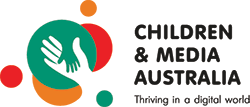Wicked: For Good

Short takes
Not suitable under 9; parental guidance to 10 (violence, scary scenes, themes, sexual references)

This topic contains:
- overall comments and recommendations
- details of classification and consumer advice lines for Wicked: For Good
- a review of Wicked: For Good completed by the Australian Council on Children and the Media (ACCM) on 25 November 2025.
Overall comments and recommendations
| Children under 9 | Not suitable due to violence, scary scenes, themes and sexual references. |
| Children aged 9–10 | Parental guidance recommended due to violence, themes and sexual references. |
| Children aged 11 and over | Ok for this age group. |
About the movie
This section contains details about the movie, including its classification by the Australian Government Classification Board and the associated consumer advice lines. Other classification advice (OC) is provided where the Australian film classification is not available.
| Name of movie: | Wicked: For Good |
| Classification: | PG |
| Consumer advice lines: | Mild themes, violence and sexual references |
| Length: | 137 minutes |
ACCM review
This review of the movie contains the following information:
- a synopsis of the story
- themes
- use of violence
- material that may scare or disturb children
- product placement
- sexual references
- nudity and sexual activity
- use of substances
- coarse language
- the movie’s message
A synopsis of the story
Glinda (Ariana Grande) and Elphaba (Cynthia Erivo) have become estranged as Glinda struggles to balance the demands of her new role and the expectations of the people of Oz with her enduring admiration of Elphaba, which the machinations of Madame Morrible (Michelle Yoh) and to a lesser extent the Wizard of Oz himself (Jeff Goldblum) have been powerless to sway. While the citizens of Oz live in fear, showered with pamphlets and vile propaganda, fed a constant stream of lies and confronted with burning effigies, emblazoned with slogans like: “Kill the Witch”, Glinda still treasures her friendship with Elphaba. Likewise, Prince Fiyero (Jonathan Bailey), who in addition to becoming engaged to Glinda has also become the head soldier in the hunt for Elphaba, recalls the innate goodness of his friend and refuses to think of her differently despite the storm of hate rising around them.
Elphaba, meanwhile, believes in the goodness of Oz. She protects the animals from cruelty and enslavement and encourages them to stand up to the Wizard. She is determined to show the people the truth so that they can understand who their Wizard really is, but her every attempt to shed light on the corruption and lies is foiled by Madam Morrible. When her sister’s death is used to trap her, she finally begins to see that no matter what she does, the people will always view her as wicked and that her only option is to give them what they want, to sacrifice herself so that someone else can be the emblem of goodness. Elphaba’s final act, unnoticed by the masses and unrecognised for what it was, goes far beyond Glinda’s shining grace, for her act was born of a love that asked nothing in return and it ultimately changed everything – for good.
Themesinfo
Children and adolescents may react adversely at different ages to themes of crime, suicide, drug and alcohol dependence, death, serious illness, family breakdown, death or separation from a parent, animal distress or cruelty to animals, children as victims, natural disasters and racism. Occasionally reviews may also signal themes that some parents may simply wish to know about.
Betrayal; Relationship breakdown; Corruption; Deceitfulness; Magic; Prejudice and Discrimination.
Use of violenceinfo
Research shows that children are at risk of learning that violence is an acceptable means of conflict resolution when violence is glamourised, performed by an attractive hero, successful, has few real life consequences, is set in a comic context and / or is mostly perpetrated by male characters with female victims, or by one race against another.
Repeated exposure to violent content can reinforce the message that violence is an acceptable means of conflict resolution. Repeated exposure also increases the risks that children will become desensitised to the use of violence in real life or develop an exaggerated view about the prevalence and likelihood of violence in their own world.
There is some violence in this movie, including:
- Elphaba sets a group of enslaved animals free and is attacked in the process. She hits characters with her broomstick, and a character is caught up by a random chain and dragged before she falls into others and lands in paint.
- Killing Elphaba is a topic of discussion and it is repeatedly mentioned that water can end her.
- Elphaba writes a message in the sky telling people that “Our wizard lies”. Madame Morrible changes it to: “Oz dies”, and further incites fear and hate by claiming that Elphaba will kill them all.
- Glinda and Fiyero’s wedding is trashed by a stampede of animals fleeing the Wizard’s dungeon.
- Madame Morrible tells the guests that the stamped is the work of the Wicked Witch and that she wants to kill them all.
- Glinda and Elphaba slap each other in the face.
- Fiyero holds Glinda at gun point in order to make the soldiers release Elphaba.
- Soldiers grab Fiyero, beat him and tie him up to die, suspending him from a post to try to get him to tell them where Elphaba went.
- A violent mob chants: “Kill the Witch!”
- Elphaba is delivered a piece of Fiyero’s uniform and led to believe that he was killed trying to protect her.
- Elphaba ‘melts’ when a bucket of water is thrown on her. She screams and writhes before disappearing entirely.
- Glinda imprisons Madame Morrible and has her carried off by flying monkeys.
Material that may scare or disturb children
Under fiveinfo
Children under five are most likely to be frightened by scary visual images, such as monsters, physical transformations.
In addition to the above-mentioned violent scenes, there are some scenes in this movie that could scare or disturb children under the age of five, including the following:
- The flying monkeys look sinister and dangerous, especially when they initially pursue Elphaba.
- The large, looming face of the Wizard and the sinister voice that accompanies it, may be disturbing for some children.
- There are painful scenes of transformation such as when a character is transformed into a tin man, where his heart is meant to have turned to stone but instead he is left completely heartless. He screams in agony during this process while Elphaba begs that it stops.
- Fiyero is taken prisoner after coming to save Elphaba’s life. He is taken and tortured. Scenes of his being beaten flash before Elphaba’s eyes as she tries to save his life from afar. The spell which she casts to save him and end his pain, transforms him into a scarecrow.
Aged five to eightinfo
Children aged five to eight will also be frightened by scary visual images and will also be disturbed by depictions of the death of a parent, a child abandoned or separated from parents, children or animals being hurt or threatened and / or natural disasters.
In addition to the above-mentioned violent scenes and scary visual images, there are some scenes in this movie that could scare or disturb children aged five to eight, including the following:
- Animals are enslaved and whipped as they are forced to pave the yellow brick road. They are shown with horns cut off, and in chains, and one is pushed to the ground.
- Animals are kept in a secret dungeon-like room, chained in tiny cages, terrified and helpless until Elphaba sets them free. She is extremely angry and promises the Wizard that she will now fight him until the day that she dies.
- Madame Morrible summons a tornado, which rips through Oz and sends a house into Munchkin Land, where it lands on Elphaba’s sister and kills her.
- Some children may find the shadowy portrayal of Elphaba’s death scary or disturbing.
Aged eight to thirteeninfo
Children aged eight to thirteen are most likely to be frightened by realistic threats and dangers, violence or threat of violence and / or stories in which children are hurt or threatened.
- Nothing further noted.
Product placement
- None noted.
Sexual references
There are some sexual references in this movie, including:
- Based on a previous affair, the Wizard discovers that Elphaba is his daughter.
Nudity and sexual activity
There is some nudity and sexual activity in this movie, including:
- Fiyero and Glinda kiss.
- The Wizard and Elphaba’s mother have an affair.
- Fiyero and Elphaba run off together. They are shown kissing and caressing each other as they take off outer garments and are later shown lying in bed, Fiyero bare chested and Elphaba wrapped in a robe.
Use of substances
There is some use of substances in this movie, including:
- The Wizard often drinks from a green flask. The consumption of alcohol is implied.
- The Wizard offers Glinda a drink, telling her: “This dulls the pain if you want a swig.”
Coarse language
There is some coarse language in this movie, including:
- Witch
- Traitor
- Crazy
- Shut up
- Oh my Oz.
In a nutshell
Wicked: For Good is a musical-fantasy and is the second of a two-part story exploring the background of Oz’s notorious ‘Wicked Witch’. The film is delivered as a Broadway to cinema adaptation which, despite the brilliant, lavish sets, is darker than its predecessor, and is therefore best suited to audiences over the age of ten.
The main messages from this movie are that we should be true to ourselves and show courage when faced with injustice; that friendship can transform us; that our choices have powerful impacts; and that diversity should be celebrated instead of condemned.
Values in this movie that parents may wish to reinforce with their children include:
- Friendship
- Loyalty
- Selflessness
- Courage
- Love
- Resilience
- Compassion.
This movie could also give parents the opportunity to discuss with their children attitudes and behaviours, and their real-life consequences, such as:
- Spreading hate or lies against someone or a group of people.
- Looking at others based on outward appearances instead of judging them by the content of their character.
- Lying to get what you want and to get where you want.
- Subjugating a species or group because someone says they are less worthy.
Movie Review Search
Title:
Tip: Leave out the first A, An or The
Age suitability:
Selecting an age will provide a list of movies with content suitable for this age group. Children may also enjoy movies selected via a lower age.
About our colour guide
Content is age appropriate for children this age
Some content may not be appropriate for children this age. Parental guidance recommended
Content is not age appropriate for children this age
CMA thanks the Romeo family for its support

About CMA
Children and Media Australia (CMA) is a registered business name of the Australian Council on Children and the Media (ACCM).
CMA provides reviews, research and advocacy to help children thrive in a digital world.
ACCM is national, not-for-profit and reliant on community support. You can help.
ABN: 16 005 214 531
- Home
- Site Map
- Disclaimer
- © Children and Media Australia 2012 - 2025





